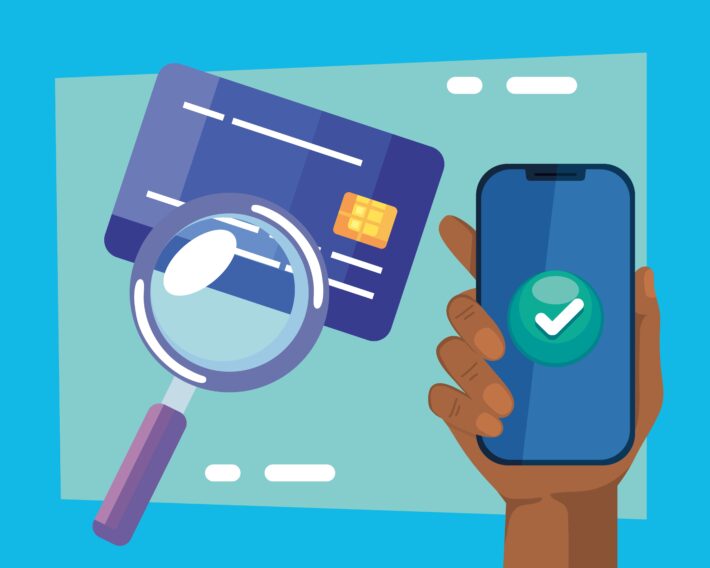Identity Verification Key Considerations For Mobile Applications

In the contemporary landscape where mobile applications assume an increasingly vital role in our daily routines, ensuring the security and authenticity of user identities stands as a paramount concern. Beyond merely protecting sensitive data, the realm of identity verification in mobile applications encompasses various dimensions, including regulatory compliance. This article endeavors to elucidate the salient factors one must consider when instituting identity verification protocols within mobile applications. It delves into an examination of the diverse methodologies at one’s disposal, delineates the advantages that such verification confers, elucidates the challenges inherent in the process, and elucidates the optimal practices to adopt for a seamless and secure user experience. Through this exploration, the article seeks to underscore how identity verification serves to augment the security and credibility of mobile applications.
What Are the Key Considerations for Identity Verification in Mobile Applications?
When contemplating Identity Verification in Mobile Applications, it is imperative to consider several crucial factors to guarantee secure and effective user authentication. These considerations encompass:
- Implementing secure access protocols,
- Utilizing biometric verification methods,
- Adhering to KYC regulations to mitigate fraud and identity theft risks,
all while upholding data privacy standards.
1. Security
The paramount consideration in mobile applications’ identity verification is security, with a specific focus on ensuring secure access, safeguarding data privacy, and implementing robust device security measures.
Encryption stands as a critical component in guaranteeing that sensitive information is transformed into an unreadable format without the corresponding decryption key. Secure data transmission protocols, notably including HTTPS, are instrumental in shielding data during transit between the mobile application and servers.
The incorporation of stringent device security protocols, such as biometric authentication and consistent security updates, serves to thwart unauthorized access to user data. Through the conscious prioritization of these security measures, developers can maintain data privacy and shield users’ personal information from potential security vulnerabilities.
2. User Experience
Improving the user experience in mobile applications entails optimizing user authentication and secure login procedures to guarantee smooth user identity verification while upholding stringent security measures.
The design of intuitive interfaces plays an critical role in simplifying the user authentication process on mobile platforms. Developers can facilitate users’ navigation through authentication steps by crafting interfaces that guide them seamlessly through the login procedure.
The integration of user-friendly authentication methods, such as biometric recognition or two-factor authentication, introduces an additional layer of security without causing inconvenience to users.
Finding a delicate equilibrium between security and convenience is imperative to ensure that users perceive a sense of both safety and ease when utilizing the application. This approach enhances the likelihood of users engaging with the application consistently, thereby enriching the overall user experience.
3. Compliance with Regulations
Adherence to regulatory requirements, such as KYC compliance and data privacy laws, is imperative for the identity verification process within mobile applications. This ensures legal compliance and serves to safeguard user data.
Failure to comply with these regulations not only exposes businesses to substantial penalties and fines but also jeopardizes their reputation and diminishes customer trust.
Identity verification tools are essential for meeting these regulatory mandates by accurately verifying and authenticating user identities. Through the utilization of such tools, organizations can optimize their onboarding procedures, combat fraud, and establish a secure environment for both users and the business.
The adoption of identity verification technologies is not solely a matter of compliance; it also represents a strategic decision aimed at mitigating risks and upholding regulatory adherence.
4. Cost
The consideration of the cost associated with the implementation of identity verification solutions in mobile applications significantly impacts the overall budget and resource allocation for mobile app security. When analyzing the costs of various identity verification methods, it is imperative to evaluate not only the initial setup expenses but also the continual maintenance fees. Some verification solutions may entail higher upfront costs due to advanced technology or customization requirements, while others may offer more cost-effective alternatives.
Taking into account potential cost savings resulting from the prevention of fraudulent activities through robust identity verification can further substantiate the investment in security measures. The implementation of enhanced security measures can also cultivate increased user trust and loyalty, thereby contributing to the sustained success of the mobile application.
5. Scalability
Scalability plays a critical role in identity management within mobile applications, as it enables the accommodation of expanding user bases and addresses evolving security requirements through the deployment of robust mobile device management and secure identity solutions. Incorporating scalable solutions into mobile applications facilitates seamless adjustment to rising user numbers and changing security threats. These systems possess the capability to easily scale up or down, thereby sustaining their effectiveness and reliability over an extended duration.
The implementation of scalable solutions ensures the efficiency and security of identity verification processes, even amidst escalating data volumes and revised requirements. A scalable identity verification system offers flexibility and agility, enableing businesses to meet the dynamic market demands while safeguarding sensitive user data.
What Are the Different Methods of Identity Verification for Mobile Applications?
Various techniques for identity verification in mobile applications encompass knowledge-based authentication, biometric authentication, two-factor authentication, and document verification. These methods offer robust identity verification through the utilization of cutting-edge technology.
1. Knowledge-Based Authentication
Knowledge-based authentication is a method that involves confirming a user’s identity by utilizing information that is unique to the individual, such as security questions or personal identification numbers. This verification process serves a critical function in bolstering security measures, particularly in the context of online transactions and account access.
By necessitating users to respond to personalized questions or provide specific details that are not readily accessible to others, knowledge-based authentication adds an additional layer of defense against unauthorized entry. However, it is important to acknowledge a potential drawback of this approach, which lies in the risk of information exposure or compromise, especially if users inadvertently disclose sensitive information or if the questions are based on easily deducible data.
Despite its inherent limitations, knowledge-based authentication remains a fundamental component of user verification protocols across various sectors, contributing significantly to the overarching framework of identity validation.
2. Biometric Authentication
Biometric authentication utilizes distinctive biological characteristics such as fingerprints, facial recognition, or voice patterns to verify identity within mobile applications.
The various forms of biometric authentication present differing levels of accuracy and security advantages. For example, fingerprint recognition is widely acknowledged as one of the most secure methods due to its uniqueness, rendering replication challenging. Facial recognition technology has garnered popularity due to its convenience and rapidity in identity verification. In contrast, voice patterns rely on distinct vocal characteristics, providing an additional layer of security.
The incorporation of mobile biometrics, such as facial recognition or fingerprint sensors on smartphones, has enhanced the accessibility and efficiency of identity verification. Device biometrics, encompassing technologies like iris scanning or palm vein recognition, are increasingly being integrated into devices to bolster security measures while ensuring a user-friendly interface.
3. Two-Factor Authentication
Two-factor authentication (2FA) serves to enhance security measures by necessitating the presentation of two distinct forms of identification before granting access, thereby combining something the user knows with something they physically possess.
This added layer of security significantly diminishes the likelihood of unauthorized access to confidential information. Within the sphere of mobile applications, the integration of 2FA is paramount for the protection of user data and the perpetuation of user confidence. By implementing an additional verification step beyond the traditional use of passwords, 2FA guarantees that even in cases where one factor is compromised, the probability of a security breach is notably reduced. When paired with multi-factor authentication, which encompasses elements such as biometric scans or physical tokens, the security of mobile application users is further strengthened.
4. Document Verification
Document verification is the practice of confirming a user’s identity by validating official documents such as passports, driver’s licenses, or ID cards. This procedure is essential for secure enrollment and identity proofing. Technological tools like optical character recognition (OCR) and biometric verification play a pivotal role in ensuring precise and dependable identity verification. OCR aids in extracting data from documents, while biometric verification authenticates the user’s identity based on unique physical characteristics.
By implementing rigorous document verification protocols, organizations can deter fraud, protect sensitive data, and cultivate trust with their clientele. The integration of advanced technologies not only boosts operational efficiency but also mitigates the likelihood of human error during the verification process.
What Are the Benefits of Implementing Identity Verification in Mobile Applications?
The implementation of identity verification in mobile applications presents a range of advantages, including:
- Heightened security measures
- Enhanced user experience
- Adherence to regulatory requirements
- Mitigation of fraud risks
- Bolstered levels of trust and credibility
1. Increased Security
The implementation of identity verification significantly enhances security by ensuring that only authorized users can access the mobile application, thereby mitigating identity fraud and securing transactions.
The integration of identity verification measures introduces an additional layer of protection to mobile devices, safeguarding sensitive information from potential cyber threats. By authenticating the user’s identity through various methods such as biometrics or two-factor authentication, mobile security is substantially reinforced. Secure transactions play a pivotal role in this context as they verify the legitimacy of financial exchanges, thereby decreasing the likelihood of fraudulent activities. This proactive approach not only improves the overall security of mobile devices but also fosters user trust and confidence in carrying out transactions while on-the-go.
2. Improved User Experience
A proficient identity verification process enhances user experience by offering seamless and efficient user authentication, thereby minimizing friction during login and transactions.
Integrating user-friendly verification methods plays a pivotal role in improving the mobile user experience. By enabling users to easily verify their identity through mechanisms like fingerprint recognition or one-time passcodes, the process not only becomes more secure but also significantly more convenient.
Maintaining a delicate equilibrium between security and convenience is paramount in ensuring that users trust the platform while relishing a smooth and trouble-free experience. This approach fosters increased user engagement with the mobile app or service, ultimately resulting in heightened satisfaction and loyalty.
3. Compliance with Regulations
The implementation of identity verification is imperative to ensure adherence to regulations such as KYC compliance, which necessitates the verification of user identities to mitigate the risks of fraud and money laundering.
This procedure holds significant importance for organizations, particularly within the mobile application sector. By verifying the identities of their users, companies are able to reduce the risks associated with financial crimes and meet their legal obligations. This not only serves to protect the integrity of transactions but also fosters trust among users.
Compliance with regulatory standards not only strengthens security measures but also upholds ethical standards in the digital sphere, ensuring that mobile applications operate within the confines of the law.
4. Protection Against Fraud
Identity verification is a critical component in the prevention of fraud as it serves to authenticate a user’s identity and prevent unauthorized access, thereby diminishing instances of identity theft.
An effective measure for preventing fraud, facilitated by identity verification, is the implementation of biometric authentication. This method utilizes distinct physical attributes like fingerprints or facial recognition to validate a user’s identity. By incorporating this technology, an additional layer of security is added, significantly minimizing the likelihood of impersonation or unauthorized access.
Furthermore, multi-factor authentication, which mandates multiple forms of verification, such as a password in conjunction with a one-time code sent to the user’s mobile device, provides heightened protection against fraudulent activities.
In the contemporary digital environment, the implementation of secure identity verification is imperative to safeguard sensitive user data and combat attempts of identity theft.
5. Enhanced Trust and Credibility
The implementation of robust identity verification processes serves to enhance trust and credibility among users by ensuring secure user verification and safeguarding their personal information.
When users are confident that their data is being protected through rigorous verification methods, they are more inclined to engage with the mobile application consistently. This increased engagement can result in heightened usage, positive referrals through word-of-mouth, and a deeper sense of loyalty towards the platform. Effective user verification mechanisms also contribute to the mitigation of fraudulent activities within the application, further enhancing the overall credibility and reliability of the service. Ultimately, prioritizing user data security through reliable verification processes can substantially enhance the overall user experience and perception of the application.
What Are the Challenges of Implementing Identity Verification in Mobile Applications?
The implementation of identity verification within mobile applications poses numerous challenges. These challenges include the need to strike a balance between security measures and user experience, seamlessly integrating with pre-existing systems, effectively managing associated costs, and staying abreast of evolving regulatory requirements.
1. Balancing Security and User Experience
Achieving a balance between security and user experience presents a significant challenge in the realm of identity verification, as excessively stringent security measures have the potential to impede the mobile user experience.
One effective approach to striking this delicate equilibrium is the incorporation of multi-factor authentication, which introduces an additional layer of security without compromising user convenience. The utilization of biometric authentication modalities such as fingerprint or facial recognition serves to augment security measures while ensuring a seamless user experience.
Furthermore, the development of intuitive user interfaces for authentication procedures can facilitate the attainment of an optimal equilibrium between security and convenience. By streamlining the verification process steps, users are more inclined to adhere to security protocols without experiencing feelings of frustration or being overwhelmed.
2. Integration with Existing Systems
The integration of identity verification systems with an existing mobile app security infrastructure can present complexities that necessitate meticulous planning and execution.
A key technical challenge in this integration process is ensuring the compatibility of the identity verification systems with the current architecture of the app. It is of utmost importance to evaluate how the verification process will interact with the app’s existing security measures to preempt potential vulnerabilities.
Industry best practices advocate for the incorporation of multi-factor authentication to bolster the app’s security framework. The seamless integration of identity verification not only enhances the user experience but also mitigates the risk of unauthorized access.
Central to the maintenance of a secure mobile app environment is the prioritization of user data protection and privacy concerns.
3. Cost and Resources
The expenses and resources involved in the implementation of identity verification solutions can be significant, impacting the overall budget and resource distribution for secure identity management. This is particularly critical for enterprises aiming to protect sensitive data and prevent fraudulent activities. The investment in robust identity verification measures serves not only to ensure compliance with regulatory standards but also to cultivate trust among customers.
Managing the financial implications of such implementations can pose a challenge. For tackle this issue, organizations may consider cost-effective solutions such as automated verification processes and the utilization of advanced technologies like biometrics. By optimizing the allocation of resources and streamlining verification workflows, companies can strike a balance between security and operational efficiency.
4. Keeping Up with Changing Regulations
Adapting to changing regulations represents a continuous challenge within the realm of identity verification, necessitating ongoing adjustments to compliance procedures and verification protocols.
Remaining current with the dynamic regulatory landscape is imperative for organizations seeking to ensure the effectiveness and legal compliance of their identity verification processes. Failure to align with new laws and regulations can lead to severe legal consequences, encompassing fines and reputational harm.
Through the regular review and modification of verification protocols in accordance with the latest compliance standards, businesses can bolster their security frameworks and cultivate credibility with clientele. Prioritizing compliance initiatives and investing in technologies that facilitate seamless adaptation to regulatory changes are fundamental steps in preserving the integrity of identity verification systems.
What Are the Best Practices for Implementing Identity Verification in Mobile Applications?
The incorporation of identity verification within mobile applications necessitates adherence to best practices, which encompass the utilization of multiple layers of verification, maintaining the security of user data, consistently updating and testing the verification process, and educating users on the significance of identity verification.
1. Use Multiple Layers of Verification
Utilizing multiple layers of verification, such as multi-factor authentication, enhances secure identity authentication and mitigates the risk of unauthorized access. By integrating diverse verification methods like biometric recognition, time-based tokens, or security questions, organizations can establish a robust security framework that poses a significant challenge for malicious actors seeking unauthorized entry. The implementation of multi-layered verification strategies not only heightens security measures but also enhances user confidence and contentment with the authentication process. This sophisticated security approach guarantees that only authorized individuals can attain access to sensitive information, thereby safeguarding valuable data and preempting potential data breaches.
2. Keep User Data Secure
Ensuring the security of user data entails the implementation of robust data privacy measures and secure data transmission protocols to safeguard personal information against breaches.
One commonly utilized method for securing user data during transmission is encryption, which involves encoding the information in a manner that restricts access solely to authorized parties. This practice guarantees that, in the event of interception, the data remains indecipherable to unauthorized entities.
Technologies such as Secure Sockets Layer (SSL) and Transport Layer Security (TLS) are frequently utilized to establish secure connections between users and servers, thereby protecting data as it traverses networks.
Regarding data storage, practices like access controls, authentication mechanisms, and routine backups are essential components for safeguarding sensitive information. By integrating these methods and technologies, organizations can substantially mitigate the risk of data breaches and uphold the privacy of their users.
3. Regularly Update and Test the Verification Process
It is imperative to regularly update and test the verification process to ensure the continued effectiveness and security of identity verification systems against evolving threats.
The significance of this ongoing enhancement and vigilance cannot be overstated, particularly as technological advancements parallel the tactics employed by fraudulent actors to circumvent security protocols. By consistently updating the verification process, any potential vulnerabilities or shortcomings can be promptly identified and remedied.
Concurrently, thorough testing holds equal importance in validating system efficacy and guaranteeing accurate performance across diverse scenarios. By adhering to these practices, bolstering system integrity and reliability not only serves to protect user identities but also upholds confidence in the organization’s security protocols.
4. Educate Users on the Importance of Identity Verification
It is essential to educate users on the significance of identity verification to facilitate their comprehension of the necessity for secure transactions and to promote adherence to verification protocols.
User education plays a pivotal role in enhancing security measures concerning online transactions. By imparting users with an understanding of how identity verification protects their sensitive data, they are more likely to be vigilant and proactive in their online engagements.
To effectively convey the importance of identity verification, organizations should concentrate on simplifying intricate security terminology and utilizing practical scenarios to demonstrate potential risks. Encouraging users to establish robust, distinct passwords and activate two-factor authentication are tangible actions for reinforcing secure practices.
By underscoring the repercussions of data breaches and illuminating the advantages of secure behaviors, users can be further incentivized to prioritize identity verification.
Frequently Asked Questions
What is identity verification and why is it important for mobile applications?
Identity verification is the process of confirming the identity of an individual, usually through the use of personal information and credentials. It is important for mobile applications because it helps to prevent fraud, protect sensitive data, and ensure a secure user experience.
What are some key considerations for implementing identity verification in a mobile application?
Some key considerations include choosing a reliable verification method, ensuring user privacy and data protection, complying with legal regulations, and considering user experience and convenience.
What are the different types of identity verification methods that can be used in mobile applications?
There are various methods such as biometric verification (fingerprint, facial recognition), document verification, two-factor authentication, and knowledge-based authentication (security questions, PIN codes).
How can mobile applications ensure the security of user data during the identity verification process?
Mobile applications can ensure security by implementing encryption techniques, storing data securely, and using secure communication protocols. They should also regularly update their security measures to stay ahead of potential threats.
Are there any legal regulations that mobile applications need to follow when it comes to identity verification?
Yes, there are various laws and regulations, such as GDPR and CCPA, that require businesses to protect the personal information of their users and obtain their consent before collecting or using it for identity verification purposes.
What are some common challenges that mobile applications face when implementing identity verification?
Some common challenges include balancing security and convenience, managing user data and privacy concerns, and keeping up with the constantly evolving methods of fraud and identity theft.



